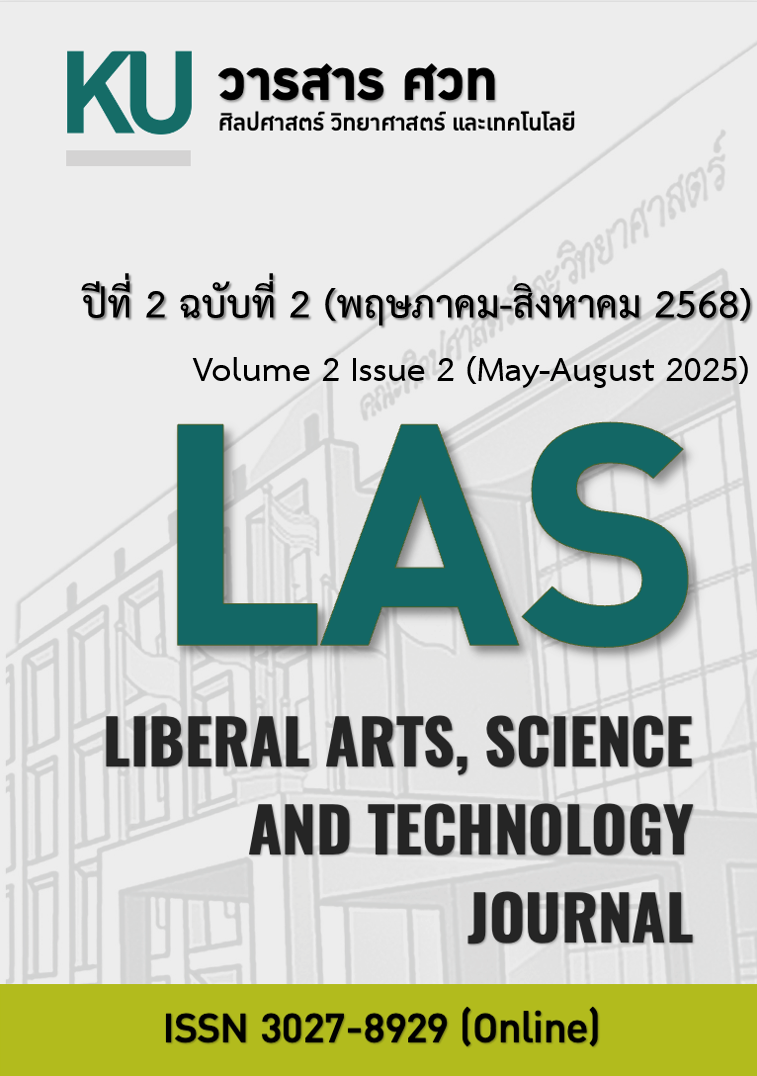ปริมาณสารพฤกษเคมีและฤทธิ์ต้านอนุมูลอิสระของสารสกัดดอกอัญชันด้วยวิธีการสกัดที่แตกต่างกัน
คำสำคัญ:
สารประกอบฟีนอล, ฟลาโวนอยด์, แช่หมัก, สกัดด้วยซอกห์เลตบทคัดย่อ
อัญชัน (Clitoria ternatea) เป็นพืชที่มีฤทธิ์ทางชีวภาพมากมาย งานวิจัยนี้มีวัตถุประสงค์เพื่อศึกษาปริมาณสารพฤกษเคมี ได้แก่ สารประกอบฟีนอล ฟลาโวนอยด์ วิตามินซี และแอนโทไซยานิน รวมถึงฤทธิ์ต้านอนุมูลอิสระจากสารสกัดดอกอัญชันด้วยวิธีแช่หมัก (maceration) และการสกัดด้วยซอกห์เลต (Soxhlet extraction) ผลการศึกษาพบว่า สารสกัดดอกอัญชันมีปริมาณสารพฤกษเคมีและฤทธิ์ต้านอนุมูลอิสระเพิ่มขึ้นเมื่อความเข้มข้นเพิ่มขึ้น โดยมีปริมาณสารประกอบฟีนอลมากที่สุด (มีค่าสูงถึง 156.12±17.98 mg GAE/g extract) รองลงมา ได้แก่ ฟลาโวนอยด์ วิตามินซีและแอนโทไซยานิน ตามลำดับ เมื่อเปรียบเทียบวิธีการสกัดพบว่า วิธีสกัดด้วยซอกห์เลต ส่งผลให้ปริมาณสารประกอบฟีนอล ฟลาโวนอยด์ และวิตามินซีสูงกว่าวิธีแช่หมัก ขณะวิธีแช่หมักส่งผลให้ปริมาณแอนโทไซยานินและสมบัติการรีดิวซ์ของสารสกัดสูงกว่า และวิธีการสกัดทั้งสองวิธีให้ผลไม่แตกต่างกันทางสถิติต่อฤทธิ์การกำจัดอนุมูลอิสระ DPPH โดยมีค่า EC50 ของสารสกัดด้วยวิธีแช่หมักและวิธีสกัดด้วยซอกห์เลตเท่ากับ 1.49 และ 1.57 มิลลิกรัม/มิลลิลิตร ตามลำดับ จากผลการศึกษาแสดงให้เห็นว่าดอกอัญชันเป็นแหล่งสารพฤกษเคมีและสารต้านอนุมูลอิสระ โดยวิธีการสกัดมีผลต่อปริมาณสารสำคัญในดอกอัญชัน
เอกสารอ้างอิง
ธีร์ หะวานนท์, และเกียรติสุดา เหลืองวิลัย. (2562). ผลของเวลาเก็บเกี่ยวและฤดูกาลต่อกิจกรรมการต้านอนุมูลอิสระ ปริมาณแอนโทไซยานิน และสารฟีนอลิกทั้งหมดในดอกอัญชัน. วารสารเกษตรพระจอมเกล้า, 37(4), 655-661.
รัตนา อินทรานุปกรณ์. (2547). การตรวจสอบและการสกัดแยกสารสำคัญจากสมุนไพร. สำนักพิมพ์แห่งจุฬาลงกรณ์มหาวิทยาลัย.
Alara, O. R., Abdurahman, N. H., & Ukaegbu, C. I. (2018). Soxhlet extraction of phenolic compounds from Vernonia cinerea leaves and its antioxidant activity. Journal of Applied Research on Medicinal and Aromatic Plants, 11, 12-17. https://doi.org/10.1016/j.jarmap.2018.07.003
Analeti, P. & Anil, B. (2023). Analysis of antioxidants activity, phenolic content and vitamin-C of Clitoria ternate. International Journal for Research Trends and Innovation, 8(7), 531-534.
Bitwell, C., Indra, S. S., Luke, C., & Kakoma, M. K. (2023). A review of modern and conventional extraction techniques and their applications for extracting phytochemicals from plants. Scientific African, 19, e01585. https://doi.org/10.1016/j.sciaf.2023.e01585
Brand-Williams, W., Cuvelier, M. E., & Berset, C. (1995). Use of a free radical method to evaluate antioxidant activity. LWT-Food Science and Technology, 28(1), 25–30.
Chin, F. S., Chong, K. P., Markus, A., & Wong, N. K. (2013). Tea polyphenols and alkaloids content using soxhlet and direct extraction methods. World Journal of Agricultural Sciences, 9(3), 266-270.
Harykrishnan, S., Ganapathy, M., Abinaya, K., Meenakumari, S., Thirumavalavan, M., Anbu, P., & Pachaiappan, R. (2025). An evaluation study on screening, partial purification, and characterization of proteins and antioxidant peptides from two varieties of Clitoria ternatea. International Journal of Biological Macromolecules, 285, 138312, https://doi.org/10.1016/j.ijbiomac.2024.138312.
Kaisoon, O., Siriamornpun, S., Weerapreeyakul, N., & Meeso, N. (2011). Phenolic compounds and antioxidant activities of edible flowers from Thailand. Journal of Functional Foods, 3, 88-99.
Kamkaen, N, & Wilkinson, J. M. (2009). The antioxidant activity of Clitoria ternatea flower petal extracts and eye gel. Phytotherapy Research, 23(11), 1624-1625.
Kazuma K, Noda N, Suzuki M. 2003. Flavonoid composition related to petal color in different lines of Clitoria ternatea. Phytochemistry, 64, 1133-1139.
Lee, J., Durst, R. W., & Wrolstad, R. E. (2005). Determination of total monomeric anthocyanin pigment content of fruit juices, beverages, natural colorants, and wines by the pH differential method: collaborative study. Journal of AOAC International, 88, 1269-1278.
Li, C., Tang, W., Chen, S., He, J., Li, X., Zhu, X., Li, H., & Peng, Y. (2022). Phytochemical properties and in vitro biological activities of phenolic compounds from flower of Clitoria ternatea L. Molecules, 27(19), 6336. https://doi.org/10.3390/molecules27196336
Masota, N. E., Vogg, G., Heller, E., & Holzgrabe, U. (2020). Comparison of extraction efficiency and selectivity between low-temperature pressurized microwave-assisted extraction and prolonged maceration. Arch Pharm (Weinheim), 353(10):e2000147. doi: 10.1002/ardp.202000147
Singleton, V. L., & Rossi, J. A. (1965). Colorimetry of total phenolics with phosphomolybdic-phosphotungstic acid reagents. American Journal Enology Viticulture, 16, 144–158.
Xue, H., Zhao, J., Wang, Y., Shi, Z., Xie, K., Liao, X., & Tan, J. (2024). Factors affecting the stability of anthocyanins and strategies for improving their stability: A review. Food Chemistry: X, 24, 101883. https://doi.org/10.1016/j.fochx.2024.101883
Yen, G. C., & Chen, H. Y. (1995). Antioxidant activity of various tea extracts in relation to their antimutagenicity. Journal of Agricultural and Food Chemistry, 43, 27–32.
Zhishen, J., Mengcheng, T., & Jianming, W. (1999). The determination of flavonoid contents in mulberry and their scavenging effects on superoxide radicals. Food Chemistry, 64, 555–559.
ดาวน์โหลด
เผยแพร่แล้ว
รูปแบบการอ้างอิง
ฉบับ
ประเภทบทความ
หมวดหมู่
สัญญาอนุญาต
ลิขสิทธิ์ (c) 2025 ศวท : ศิลปศาสตร์ วิทยาศาสตร์และเทคโนโลยี (LAS: Liberal Arts, Science and Technology)

อนุญาตภายใต้เงื่อนไข Creative Commons Attribution-NonCommercial-NoDerivatives 4.0 International License.







